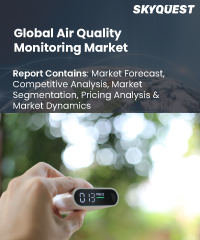
Report ID: SQMIG45J2075

Report ID:
SQMIG45J2075 |
Region:
Global |
Published Date: February, 2024
Pages:
157
|
Tables:
111 |
Figures:
77
Air Quality Monitoring Market Drivers
Public Awareness and Support for Public & Private Environment Conservation Initiatives
Upcoming Smart Cities Projects to Increase Market Demand
Air Quality Monitoring Market Restraints
High Product Costs
Our industry expert will work with you to provide you with customized data in a short amount of time.
REQUEST FREE CUSTOMIZATIONWant to customize this report? This report can be personalized according to your needs. Our analysts and industry experts will work directly with you to understand your requirements and provide you with customized data in a short amount of time. We offer $1000 worth of FREE customization at the time of purchase.

Report ID: SQMIG45J2075